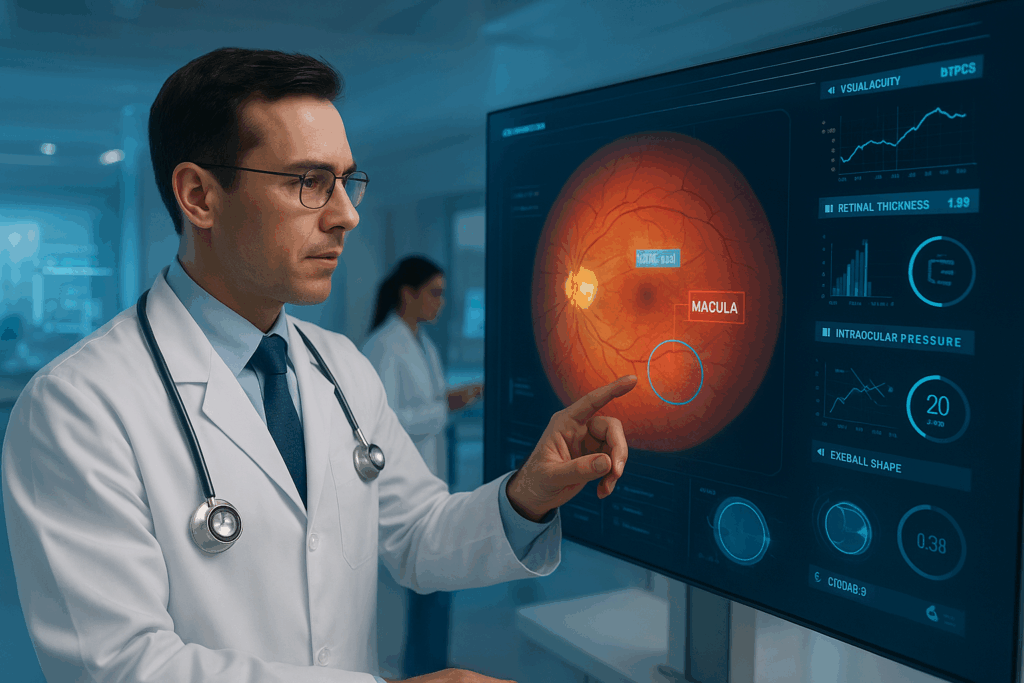Early and precise identification of retinal lesions plays a vital role in detecting diabetic retinopathy (DR) — one of the leading causes of preventable blindness worldwide. Accurate annotation and labeling of these lesions enable AI systems to support ophthalmologists with faster and more reliable diagnostic insights.
Understanding Key Retinal Lesions
🔹 Microaneurysms – These are tiny bulges in the retinal blood vessels and often represent the earliest clinical sign of diabetic retinopathy. Correct identification helps in flagging patients at risk before the disease progresses.
🔹 Hemorrhages – Small bleeding spots in the retina that indicate disease progression. Consistent labeling of these regions is essential to ensure that AI models can distinguish subtle variations across different severity levels.
🔹 Exudates – Lipid and protein deposits caused by leakage from damaged blood vessels. Accurate delineation of exudates helps in evaluating the extent of vascular damage and guiding treatment strategies.
How Marteck Solutions Supports AI-Driven Retinal Analysis
At Marteck Solutions, we combine medical expertise with precision-driven image annotation to empower AI and clinical research teams. Our experienced annotators work in close collaboration with ophthalmology specialists to ensure clinical accuracy and consistency across every labeled image.
Here’s how we help healthcare innovators and AI developers:
✅ Specialized Medical Annotation Teams – Skilled professionals trained in identifying retinal structures and lesion types across multiple imaging modalities (fundus, OCT, fluorescein angiography).
✅ Clinically Validated Labeling Protocols – Annotations reviewed and validated by domain experts to maintain diagnostic relevance and reliability.
✅ Customized Labeling Workflows – Flexible workflows aligned with specific project requirements, from segmentation and bounding box labeling to multi-class classification.
✅ Scalable and Secure Delivery – Ability to handle projects of any size while maintaining data confidentiality and quality assurance at every stage.
By partnering with Marteck Solutions, organizations can accelerate the development of robust AI systems for diabetic retinopathy screening and monitoring—leading to early intervention, enhanced diagnostic confidence, and better patient outcomes.
Let’s collaborate to advance the future of ophthalmic AI with clinically meaningful, expertly labeled retinal images.
